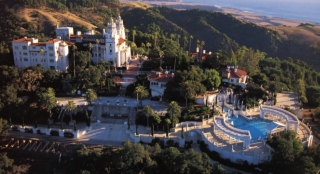|
Every once in a while, however, every so often comes a situation in which reality totally, completely, and beyond any shadow of doubt comes out ahead of unreality in a standoff. When reality comes on so powerfully that it stands out and towers over unreality ie towers over unreality which in any case has no limits, then a special situation has occurred. When reality totally, completely, and beyond any shadow of doubt comes out ahead of limitless unreality, we describe such a situations as fantasy, fantastic, surreal, super-real, beyond belief.
When I first realized what it took to create Hearst Castle, after the enormity of it finally sunk in, I thought to myself "I don't even dream this big ...".
